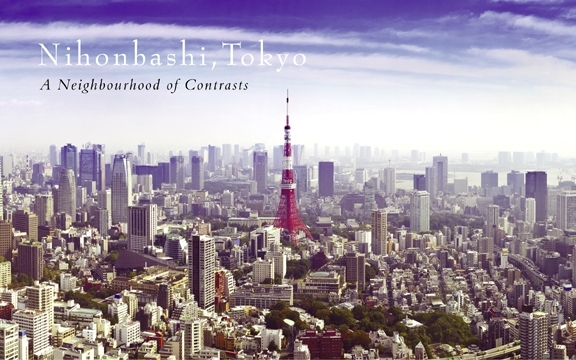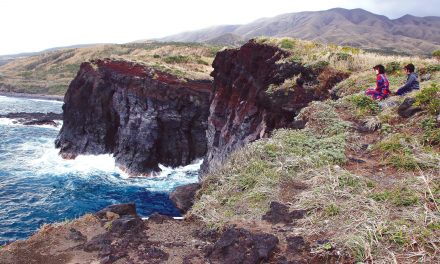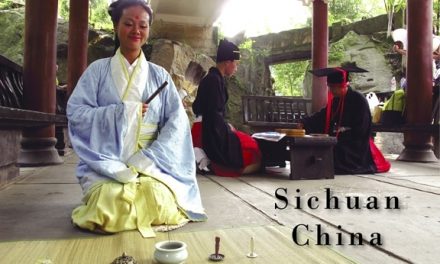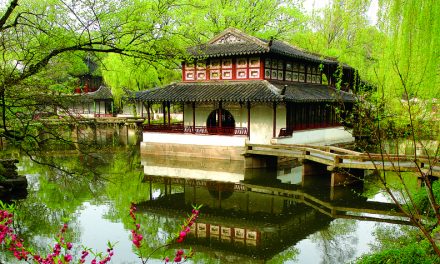Japan
Nihonbashi, Tokyo – A Neighbourhood of Contrasts
Article & Photography by Jennifer Merrick
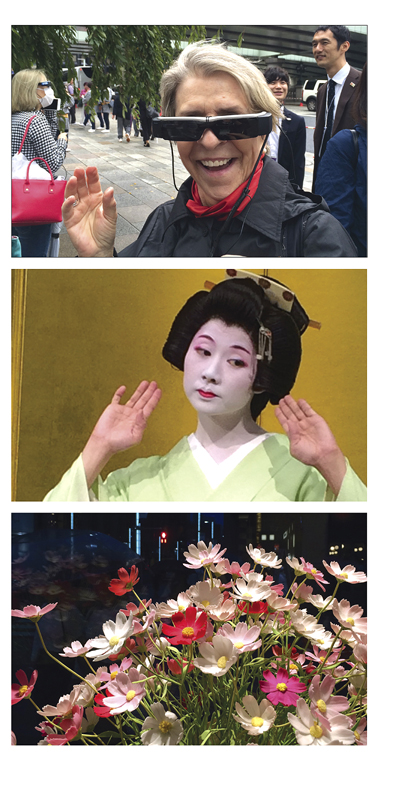
Never have I encountered a country with as much contrast as Japan: thousands of years of tradition and the most futuristic of technology; hallowed shrines and Hello Kitty; seas of gray suits and the craziest of costume-like getups; welcoming and distant. You can experience this contrast throughout the entire country, but even also within a couple of city blocks as we found out on a visit to Nihonbashi, Tokyo, a city district just north of Ginza and Tokyo Station.
As we stood beside the Nihonbashi River, surrounded by modern high rises and busy streets, our guide handed us a pair of black glasses that looked like it came straight out of a sci-fi movie. As we focused on certain designated points, we could see a 3D film overlapping with the actual location, illustrating the history of this exact spot. And what a history it is.
All Roads Start Here
During the Edo period from the beginning of the 17th century to the mid-1900s, the Nihonbashi Bridge was the starting point for the five highways of Japan, and the commercial centre of the city. Though our 3D contraption, we see animated historical dramatization of inhabitants unloading boats under the wooden bridge and fishermen bringing their catch to markets. It was a hi-tech and totally Japanese way to appreciate the area’s history.
Next we headed to the thoroughly modern COREDO Muromachi shopping complex to find out more about some of the most venerable of Japanese traditions.
The Art of a Geisha
Often misunderstood, geisha are essentially artists and are highly skilled, not only in traditional dance and music, but also in the art of conversation, social etiquette, tea ceremonies and even parlour games. Nihonbashi offers interactive experiences for gaijin (foreigners) to learn more about Geisha arts. We watched as beautifully made-up performers danced an intricately choreographed routine with their fans to the music of the shamisen, a three-stringed lute. The older women who played this traditional instrument were as elegant as the dance itself.
Not quite as graceful were the ozashiki asobe (party games) we were invited to play on stage afterwards. Tora, Tora, Tora (Tiger, Tiger, Tiger) is a more interactive form of rock, paper, scissors in which participants on opposite sides of a screen follow the lead of a geisha to perform a sequence of movements and hand gestures before assuming one of three characters: a samurai with a spear, an old lady with a cane or a tiger. The old lady wins over a samurai; samurai beats the tiger; and the tiger prevails over the old lady. And the loser takes a drink.
Sweet Tradition
Next we learned about an edible art form at Tsuruya Yoshinobu, a confectionery with a more than 200 year history specializing in Waagashi, hand-crafted sweets made from red bean paste and rice flour. We watched in awe as a shokunin (craftsman), expertly pinched and pressed the ball of candy in his palm to create an exquisitely detailed flower. Served with matcha tea, it was almost too beautiful to eat, but temptation won out. Though not nearly as sweet as the candy I am accustomed to, its delicate flavours were a treat.
“The recipe is designed not to overpower the taste of the tea,” explains Matsou, the confectionery’s manager. He also tells us that shaking the shokunin’s hand is a hiring test. “If their hands are too warm, they’re not hired”.
While you’re here, be sure to take a close look at the flower arrangement in the window display. The pink and red cosmos that look like a freshly-picked bouquet are actually sculpted from candy, showcasing the shokunins mind-blowing artistry.
More to Discover
We explored some of the other shops in the complex, many of which offer insight on the art and culture of Japan. At Kiya, a knife store, we saw the precise and elaborate ritual involved in the simple act of sharpening a blade, an activity I hadn’t given a thought to before. Speaking of rituals, you can also participate in a Japanese Tea Ceremony and learn the philosophy and intricacies of this time-honoured custom. Like all the tours and experiences mentioned, it can be booked at the Nihonbashi Information Center.
www.nihonbashi-tokyo.jp/en/information_center
www.jnto.go.jp/eng/
Click on cover to view published article

